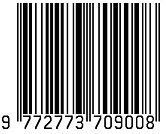Characterization of Laccase from the Fungi Fusarium Isolated from Potato Peels Using Carbon and Nitrogen Sources
DOI:
https://doi.org/10.31357/ait.v2i2.5400Keywords:
Laccase; Guaiacol; Potato peels; Carbon source; Nitrogen sourceAbstract
Laccases (E.C. 1.10.3.2 benzenediol: oxygen oxidoreductase) are an interesting group of N glycosylated multicopper blue oxidase enzymes. They are widely found in fungi, bacteria plants, insects, and lichen. They catalyze the oxidation of various phenolic and non-phenolic compounds, with the concomitant reduction of molecular oxygen to water. Laccase has various applications in industries such as textile dye bleaching, paper, and pulp bleaching, food processing, bioremediation, biodegradation, wood processing, and pharmaceuticals. However, the high cost of production has been a major hindrance to its commercial usage. This study was carried out to investigate the extraction, purification, and characterization of laccase from fungi isolated from potato peels using three different substrates. Extraction was carried out using submerged fermentation, with glucose, lactose, and maltose as the carbon sources and varying nitrogen sources; yeast and ammonium chloride (NH4Cl) Laccase was also characterized by assessing parameters such as pH, temperature, and protein concentration. Enzyme activity for maltose (yeast), glucose (yeast), glucose (NH4Cl) and lactose (NH4Cl) increased from 25oC -45 oC with optimum pH of 6,6,8 and 5 respectively while activity for maltose (NH4Cl) and lactose(yeast) increased from 25oC-65oC with optimum pH at 5 and 8 respectively. This study suggests that increased laccase production from potato peels can be achieved by using maltose, glucose and lactose as carbon sources with NH4Cl as nitrogen source.

Downloads
Published
How to Cite
License
Copyright (c) 2022 joseph minari, ESTHER ESEOSA AGHO, EKENEM EMELUMADU, Oloruntimileyin Adeniyi, Funke Ruth Olajiga

This work is licensed under a Creative Commons Attribution-NonCommercial-NoDerivatives 4.0 International License.
The Authors hold the copyright of their manuscripts, and all articles are circulated under the terms of the Creative Commons Attribution License, which permits unrestricted use, distribution, and reproduction in any medium, as long as that the original work is properly cited.
The use of general descriptive names, trade names, trademarks, and so forth in this publication, even if not specifically identified, does not imply that these names are not protected by the relevant laws and regulations. The authors are responsible for securing any permissions needed for the reuse of copyrighted materials included in the manuscript.




